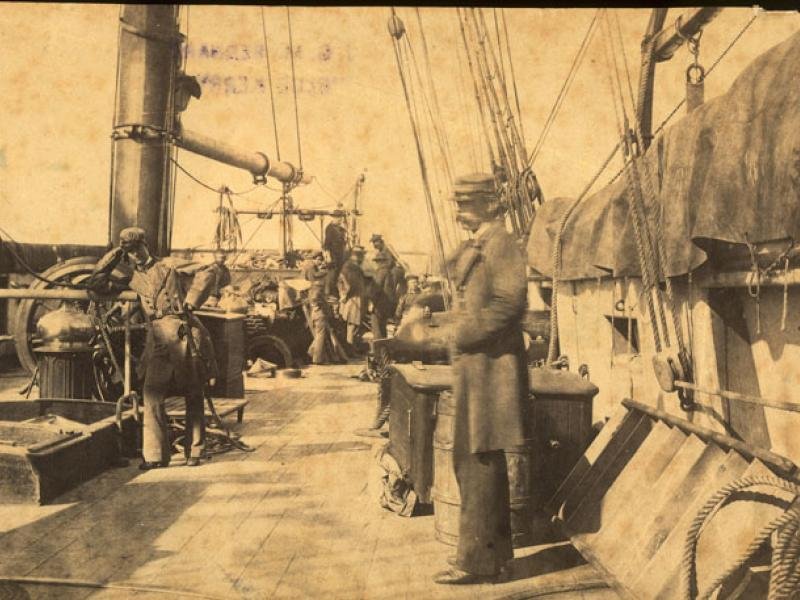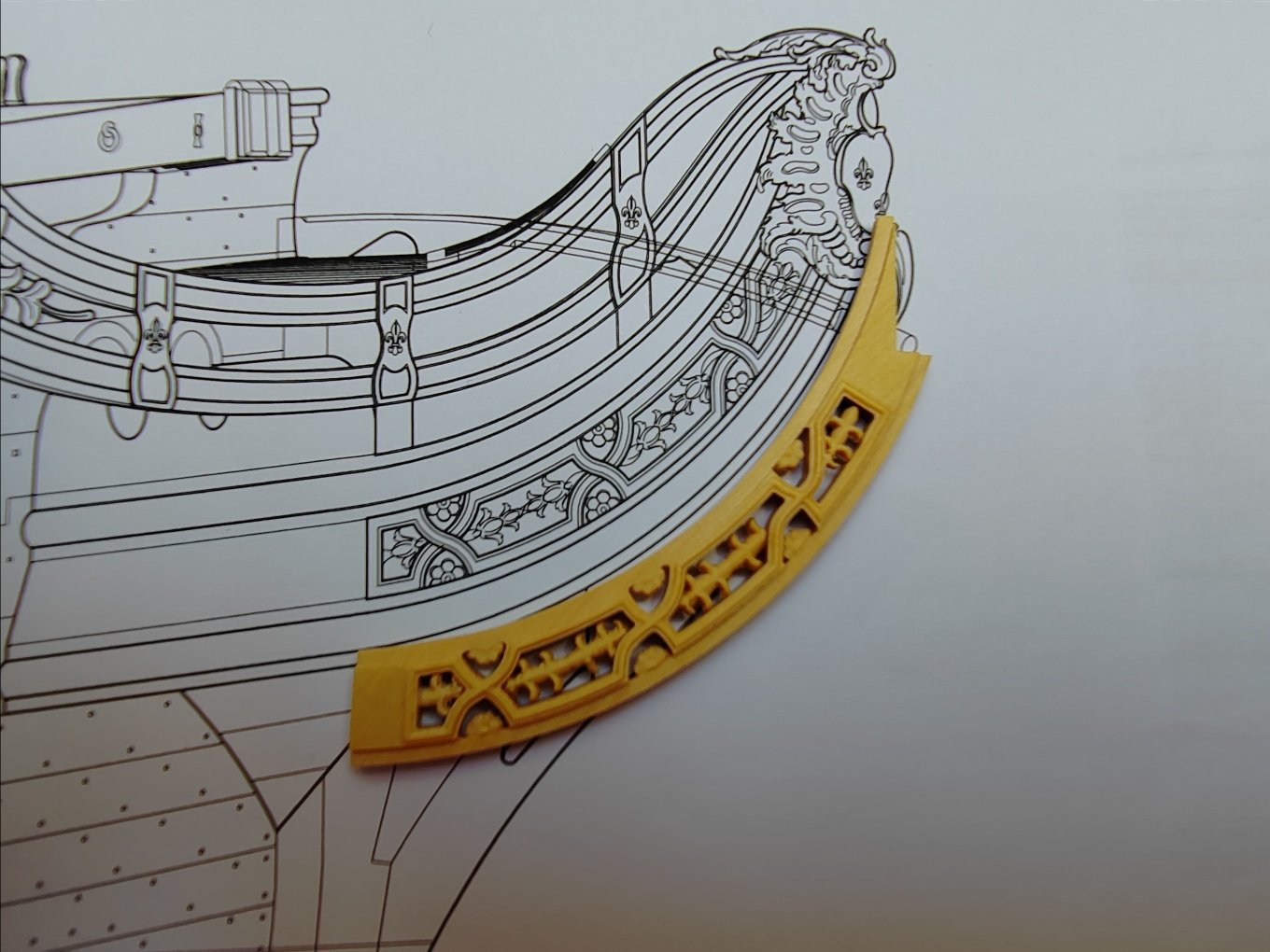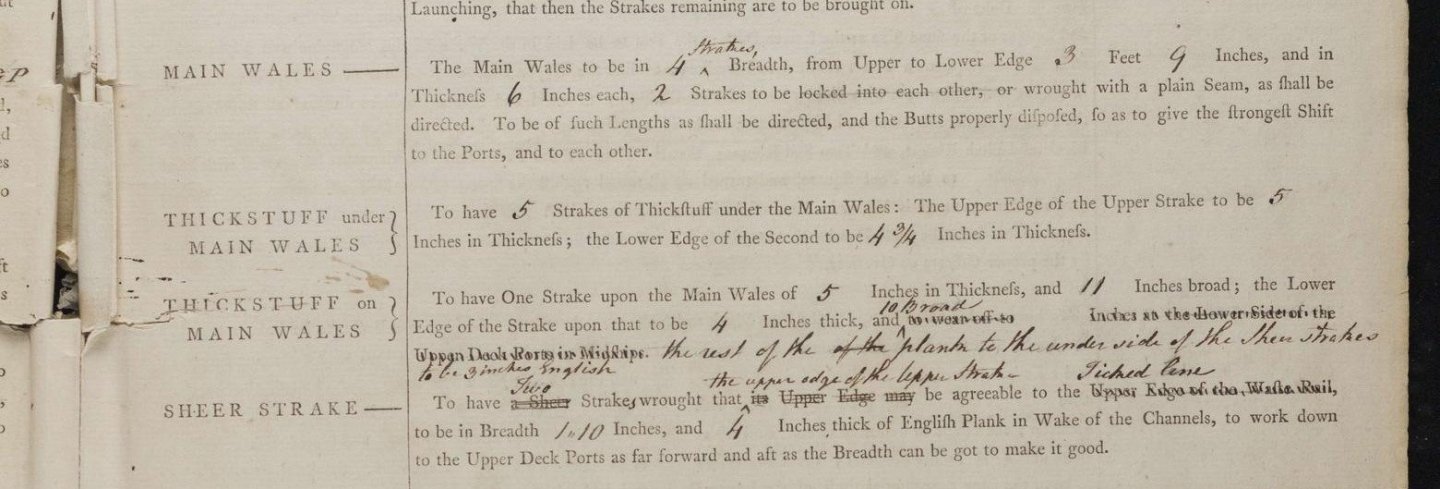-
Posts
8,149 -
Joined
-
Last visited
Content Type
Profiles
Forums
Gallery
Events
Everything posted by allanyed
-
Hi John, For the plug, have you considered styrofoam as an alternative to wood then heat and form styrene around the plug? For the area such as at the stern it may be easier to make that area of the plug out of wood to withstand heavier bending. MAYBE this video will give you some ideas. https://www.youtube.com/watch?v=AxP3vtQxVtw for the shaping of the styrene sheets. There is at least one MSW member that has made beautiful hulls for "steel" ships using alternative materials. Hope he sees your post and responds. Allan
-
Assuming these materials came in the kit I had no idea Hobbico uses Amati rope in their Revell kits. Live and learn. Regarding the tan color for the running rigging, why would you want to stain it as it is already tan? For the standing rigging I found a color sampling of pine tar that some may find interesting. https://solventfreepaint.com/pine-tar.htm Allan
-
What color is your rigging line now? Can you post a photo of all these things? The reason I ask is that in looking on line at photos of contents of the Revell Alabama kit, and photos of the actual ship the color of the blocks and deadeyes look good as they are. The running rigging lines look good on photos of the rigged model, but the standing rigging looks almost black rather than dark brown. And to add to the fun, I found photos of Alabama that show what appears to be both rope stropped blocks and internally stropped blocks. Allan
-
JJ Sounds like a great trip. I can no longer imagine my old bones going on such a hike now but back in the day it would have been a dream come true. ENJOY!!!! Allan
-

L'Amarante by marsalv - 1:36 - POF
allanyed replied to marsalv's topic in - Build logs for subjects built 1501 - 1750
Beautiful work! Can you share what material you used to make the piece in the photo below and how you made it? Thank you Allan -
Thank you very much Mark, a good knock on the head as a reminder is always welcome. 😀 As mentioned there seems to have always been exceptions, but what was the norm? Looking at many dozens of examples, I am still somewhat convinced (maybe a little less than before) the St. George model at Preble Hall, which I believe is the one to which Anderson refers, is one of the exceptions, not the rule. Thanks again! Allan
-
It is my understanding that Vasa had pins, but I do not know about Sovereign of the Seas. If she followed common practice for British ships of the line for that era she would not have had any. The model of SoS built circa 1830 which is held by RMG has no belaying pins. Other 100 gun ship models as late as 1725 held by RMG have no belaying pins so it may be safe to assume SoS would not have any either. Belaying points shown on drawings in Lees show a first rate built to the 1733 Establishment and may be a good guide for other British first rates of that era and earlier as he describes in drawing and text where every line is belayed. There is no mention of any belaying pins. Allan
-
Not sure Lees (British ships 1625-1860) will be of a lot of help for an American ship in 1862 but it will be interesting to see what was used nonetheless. Allan
-

Flag with ship name reversed on one side?
allanyed replied to daschc01's topic in Masting, rigging and sails
I REALLY appreciate the history and you taking the time to share this information Bob. Thank you! Allan -
Hi Frank, What ship are the blocks for? If for an English ship there are hundreds of photos of rigged models at RMG Collections website, the Kriegstein collection, Lees' Masting and Rigging, and other sources that might be of some help. Allan
-
Hi Phil, Sorry to say after all your hard work, but unless Revenge was an exception she had no belaying pins as English ships did not usually use belaying pins until about 160 years later than the time of Revenge. Lines were secured to cleats, bitts, and rails but not belaying pins. Regarding the Esther, did the Dutch, like the Swedish, use pins a bit earlier than the English navy? Allan
-

Flag with ship name reversed on one side?
allanyed replied to daschc01's topic in Masting, rigging and sails
Did civilian yacht schooners like this one ever actually fly a pennant with their name on it? Not sure if were are any international maritime laws in 1903 that describe/prohibit pennants with ship names? There are many examples of pennants, especially military, but I cannot find anything about names on pennants. One good article that is pretty informative for today is https://www.flags.com/blog/your-guide-to-nautical-flag-etiquette/ Allan -
Ron, I believe she carried eighteen 32 pounder carronades as well as two 12 pounder long guns so for the carronades the tackle on each side would have had an 8 inch single and 8 inch double block with 2.5" circumference rope as shown on the drawing above. The breech rope would have been about 7 inches in circumference. If this is the Model Shipway kit at 1:64 the blocks would be about 1/8" long. Allan
-

Flag with ship name reversed on one side?
allanyed replied to daschc01's topic in Masting, rigging and sails
This is an interesting question. I did not realize schooners flew pennants with the vessel's name on it but assuming they did, why would the name be backwards on one side? Weren't the letters painted or sewn on each side? If that is the case, there is no reason to have one side backwards. I am curious to know if they actually flew pennants with the name and if so, were they backwards? Allan -
This is not to say the Americans followed the same practice, but from Caruana's The History of English Sea Ordnance, volume II, page 204, including the drawing below, the following is taken from Dupin. Dupin stated that the rigging is based on details taken off, with great exactness, from carronades in vessels taken by the French from the English. The drawing shows that there is one breeching rope as well as one running rigging line with a single and double block, not two sets with two double blocks, on each side. Also note the difference in diameter of the running rigging line compared to the breech rope which is much larger. Of course there may have been be exceptions or variations as is often the case. Note that the blocks are secured to eye bolts with hooks rather than being tied to them. Allan
-
Your planking is exemplary! The only thing that looks a bit different is there are no wales. I am guessing you will put a third layer of planking to represent the wales so you may find the following information on planking from the contract for Perseus (20) and Unicorn (20) 1776 interesting. Allan Plank of the Bottom The plank of the bottom to be 3 in thick of English, the best of its kind from the light draught of water up, cut regular & well seasoned no plank to be wrought less than 23 ft in length between the fore & after shifts to have 3 strakes between every 2 butts on the same timber & none less than 5 ft 9 in scarph but in general to be 6 ft & the plank to run 24 ft in length. Main Wales The main wales to be in breadth from the upper edge to the lower edge 2 ft 10 in & in thickness 5 in to be worked in 3 strakes of such lengths & the butts properly disposed so as to give the strongest shifts to the ports & to each other. Thickstuff under the Wales To have two strakes of thickstuff under the main wales, the upper edge of the upper strake to be 3 ¾ in thick, the lower edge of the second to be 3 in in thickness. Thickstuff upon the Wales To have one strake upon the main wales of 3 ¾ in thickness & 10 in broad the lower edge of the strake upon that to be 3 in thick & to wear off to 2 ½ at the lower sill of the upper deck port and at the top of the side or lower edge of the sheer strake 2 ¼ in.
-

B-25J Mitchell by Chadwijm6 - HK Models - 1/32
allanyed replied to chadwijm6's topic in Non-ship/categorised builds
One of my all time favorite planes. Luckily I got to see one up close and personal and get on board the B25 owned by Ed Browing's Red Baron Flying team which sponsored Daryl Greenamyer's low altitude speed record flight over Mud Lake, Nevada. Great story and one of the greatest thrills of my life to work for one of the sponsors and be there to see it in person. A bit off topic but for an interesting read - https://www.916-starfighter.de/F-104RB_RedBaron_AirProgress1977.pdf Allan -
Hi Lucien, Many of us scrap first and second attempts so you are not alone by any means. One small suggestion, the plug looks to be grooved similar to the method Frolich details in his book The Art of Ship Modeling. I found this to be troublesome with the frames getting stuck in them at times. An alternate is to leave the plug smooth and glue tiny spacers where the frames go. Just need to be sure they are shallower than the frames. For scantlings of every part of many types of English boats, W.E. May's book Boats of Men of War is a great help. The below is 1:128 scale 31 foot long boat using the plug method so it can be used at least down to that scale. The last photo is a larger plug (1:48) that shows the spacers. Allan
-
Exactly what I was going to write. Well said. I have two books by Endsor and for the 17th century they are fantastic. For overall usefulness, at least for English ships you have the the three I would put up at the top of the list, Lees (Masting and Rigging), Lavery (Arming and Fitting) , and Goodwin (Construction and Fitting) For scantlings- Steel's Elements and Practice of Naval Architecture, The Shipbuilder's Repository (1788) and the Establishments although these can be very expensive. These have been put together all in one book available from Seawatch Books. TFFM by David Antscherl offers a wealth of information on "how to" that is applicable in many ways to a host if ships, not just the Swan class around which it is centered. Allan
-
I agree that the steersman did not sit on the aft most thwart. This boat is single banked so there would likely be three tholes on each side for the six rowers. The last drawing showing two tholes MIGHT be a mistake. Looking at contemporary models and drawings in W.E. May's Boats of Men of War and more in the RMG Collections, so far, I cannot find an odd number of tholes on any boat. Out of curiosity do the other six boats that Beagle carried show this oddity? Allan
-
David Your perseverance is commendable! It may be the photo but if the two thick tape lines are the top and bottom of the wales and black strake above the wales it looks to be very close to where it shows on the contemporary drawings forward. At the stern it appears to be a bit high but again, it may be the photo. The line of the wales can be seen clearly on the high res drawings on the Wiki Commons site (https://commons.wikimedia.org/wiki/Category:Ship_plans_of_the_Royal_Museums_Greenwich pages 4 and 5) as well as on the photos of the model at RMG Collections of the Apollo/Artois class of which Diana is a part. https://www.rmg.co.uk/collections/objects/rmgc-object-66303 There are low res drawings on this site but the high resolution version on Wiki Commons are often more helpful. The bottom of the wales aft is about 77 inches below the bottom of the aft most gun port opening. The bottom of the wales is 84 inches below the bottom of the forward most gun port opening. For the wales and strake on the wales, the dimensions from the contract are below. I may be mistaken on this particular ship, but often the first strake of thick stuff (in this case, one strake) above the wales is black as well as the wales. Allan
About us
Modelshipworld - Advancing Ship Modeling through Research
SSL Secured
Your security is important for us so this Website is SSL-Secured
NRG Mailing Address
Nautical Research Guild
237 South Lincoln Street
Westmont IL, 60559-1917
Model Ship World ® and the MSW logo are Registered Trademarks, and belong to the Nautical Research Guild (United States Patent and Trademark Office: No. 6,929,264 & No. 6,929,274, registered Dec. 20, 2022)
Helpful Links
About the NRG
If you enjoy building ship models that are historically accurate as well as beautiful, then The Nautical Research Guild (NRG) is just right for you.
The Guild is a non-profit educational organization whose mission is to “Advance Ship Modeling Through Research”. We provide support to our members in their efforts to raise the quality of their model ships.
The Nautical Research Guild has published our world-renowned quarterly magazine, The Nautical Research Journal, since 1955. The pages of the Journal are full of articles by accomplished ship modelers who show you how they create those exquisite details on their models, and by maritime historians who show you the correct details to build. The Journal is available in both print and digital editions. Go to the NRG web site (www.thenrg.org) to download a complimentary digital copy of the Journal. The NRG also publishes plan sets, books and compilations of back issues of the Journal and the former Ships in Scale and Model Ship Builder magazines.







